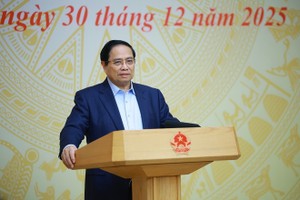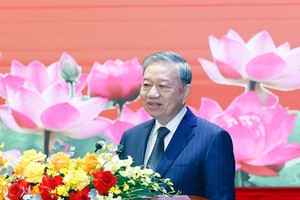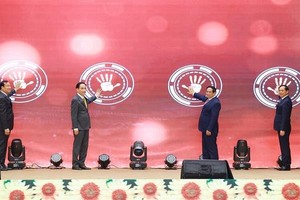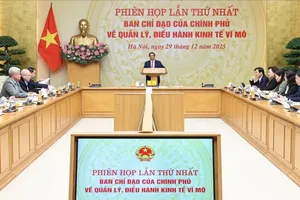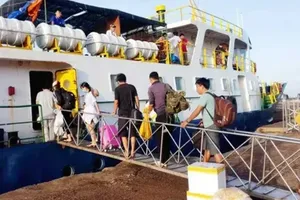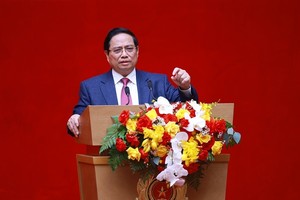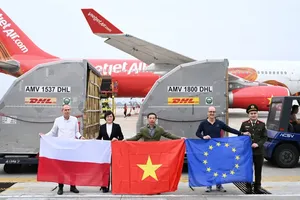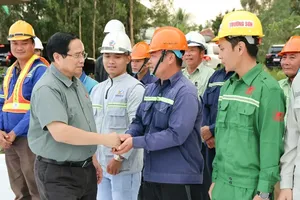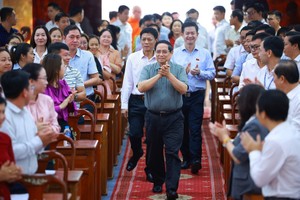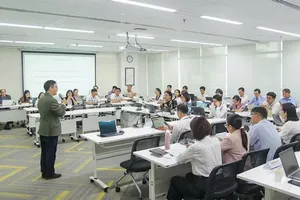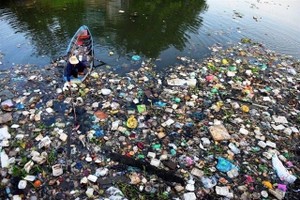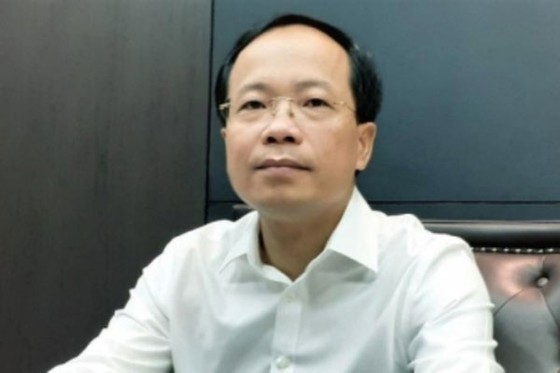 Deputy Minister of Transport Nguyen Duy Lam talks about solutions for traffic knots in Mekong Delta
Deputy Minister of Transport Nguyen Duy Lam talks about solutions for traffic knots in Mekong Delta
Regarding the question that the Rach Mieu bridge 1 is overloaded while the Rach Mieu bridge 2 is under construction, Mr. Lam said that the Rach Mieu bridge 1 was put into use in January 2009 with an expected traffic volume of more than 535,500 automobiles a year. However, the number of vehicles currently crossing the bridge has increased 10-13 times. In 2021, more than 5,410,000 automobiles crossed the bridge, or an average of 21,000 ones a day.
Especially, during holidays, the volume of vehicles crossing the bridge is about 27,000 vehicles within 24 hours. Therefore, authorities decided to build the Rach Mieu 2 bridge to ease traffic congestion on the first bridge. However, it takes more than three years to build the Rach Mieu 2 bridge making a solution for traffic jams in the area while waiting for the completion of the Rach Mieu 2 bridge a dilemma. The local proposal for the construction of a pontoon bridge is not feasible, as this is a navigational channel.
From January 2021, the Department of Transport of Tien Giang Province built a temporary Rach Mieu ferry terminal, connecting the Road 864 on the Tien Giang bank and the National Highway 57B on the shore of Ben Tre Province for all vehicles under 30 tons. Pedestrians and two-wheeler owners don’t pay fees. However, a few passengers opted for the ferry, only one 100-ton ferry is currently operated.
The Ministry of Transport will direct the Directorate for Roads of Vietnam to coordinate with localities to use more ferries for smooth traffic in the Rach Mieu ferry terminal.
The investment project to build Dai Ngai bridge on National Highway 60 in Tra Vinh Province and Soc Trang Province has been approved by the Prime Minister on investment policy using ODA loans of the Japanese Government in Decision No. 1478 on October 28, 2019.
However, till now, the Japanese government has not yet committed to an official loan for the project; accordingly, it is expected that it will not be able to start the project until the second quarter of 2025. To speed up the progress, the Government has reported to the National Assembly to use public investment capital to build the Dai Ngai bridge project under the program of social-economic recovery and development.
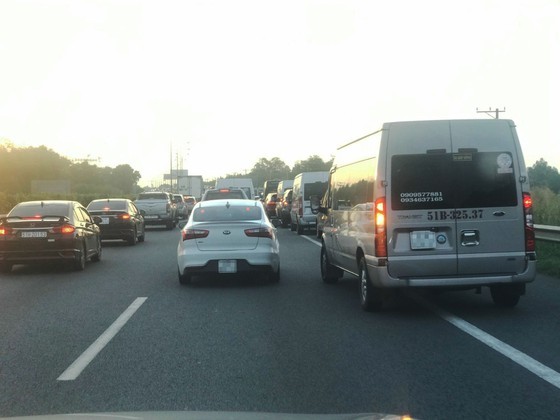 Traffic jams are frequently seen in the HCMC - Trung Luong Expressway
Traffic jams are frequently seen in the HCMC - Trung Luong Expressway
The Ministry of Transport has submitted a proposal to adjust the project's investment policy, the Ministry of Planning and Investment is appraising it and will submit it to the Prime Minister for approval in April 2022.
Currently, the Ministry of Transport is directing relevant units to prepare necessary procedures to finalize and approve the project feasibility study report and implement the next steps such as piling work for site clearance, and construction of equipment and materials. technical design, and the contractor selection for the start of the project according to regulations.
Because the toll collection scheme of the HCMC - Trung Luong Expressway has not been approved by the Government, and the time for toll collection has not been determined yet, drivers have opted for the expressway leading to frequent traffic jams.
However, the collection of public investment highway tolls ought to be approved by the National Assembly, because the Law on Road Traffic stipulates that there is no toll for state-invested roads, but authorities will collect a sum of money as a maintenance fee when owners registered their vehicles. The collection of highway tolls for state-invested projects can be implemented immediately or must wait until the Road Traffic Law is revised, which will be decided by the National Assembly.
The Ministry of Transport has determined that the need for capital to continue investing and developing the transport infrastructure system in the country is very large, especially for the expressway system. Therefore, the plan to recover the investment capital of state-invested expressway projects for reinvestment must be necessarily studied. The National Assembly has also issued a policy assigning the Government and the Ministry of Transport to study and implement.
The Ministry of Transport will work on the legal basis for the collection of tolls for the use of state-invested highways and will give advice to the government. After that, the policy of toll/price collection to recover investment capital on expressways using all public investment capital needs to be approved by the National Assembly (or the National Assembly Standing Committee).
After the National Assembly approves the project, the competent agencies such as the government, ministries and agencies can continue to carry out necessary procedures to perfect relevant legal documents that served as the basis for the implementation of toll collection.
While waiting for the National Assembly’s approval, the Ministry of Transport and local administrations will give priority to investing in renovating and upgrading parallel roads to make traffic distribution more reasonable in the immediate future so that drivers will not opt for the expressway to travel frequently.
From now to 2025, the western region will implement 19 projects, including 17 road projects, one maritime project, and one inland waterway project. Amongst them, six projects have been completed while 11 projects are under construction and two construction projects are set to start construction.
From 2025 to 2030, the region will carry out 14 more road projects, three additional maritime projects, three waterway projects, 4 aviation projects, and one railway project (HCMC - Can Tho). Hopefully, the traffic bottlenecks in the Mekong Delta will be gradually removed.

